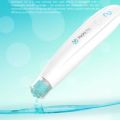Hyaluronic Acid Function in Wound Repair

Hyaluronic acid, also known as hyaluronan, is an anionic, non-sulfated glycosaminoglycan distributed in connective, epithelial, and neural tissues. It is unique among glycosaminoglycans because it is non-sulfated, forms in the plasma membrane instead of the Golgi apparatus and can be very bulky, its molecular weight often reaching millions. One of the main components of the extracellular matrix, hyaluronan significantly contributing to cell proliferation and migration, and may also be involved in the progression of certain malignancies.

The skin provides a mechanical barrier to the external environment and acts to prevent the penetration of infectious agents. Once injured, the tissues below are exposed to infection; therefore, a quick and effective healing is of crucial importance in rebuilding a barrier function. Skin healing is a complex process that involves many interactive processes initiated by hemostasis and the release of platelet-derived factors. The next steps are inflammation, granulation tissue formation, re-epithelization and remodeling. HA is likely to play a multidimensional role in the mediation of these cellular and matrix events. The proposed roles of HA in this sequence of skin healing events are detailed below.
Hyaluronic acid has also been used in the synthesis of biological scaffolds for wound healing applications. These scaffolds typically have proteins such as fibronectin attached to hyaluronan to facilitate cell migration into the wound. This is especially important for people with diabetes who have chronic wounds.
Other articles and publications:
Articles and publications of other companies:
- +1 (949) 468-0555
- 23661 Birtcher Dr.
- www.stanfordchem.com/








